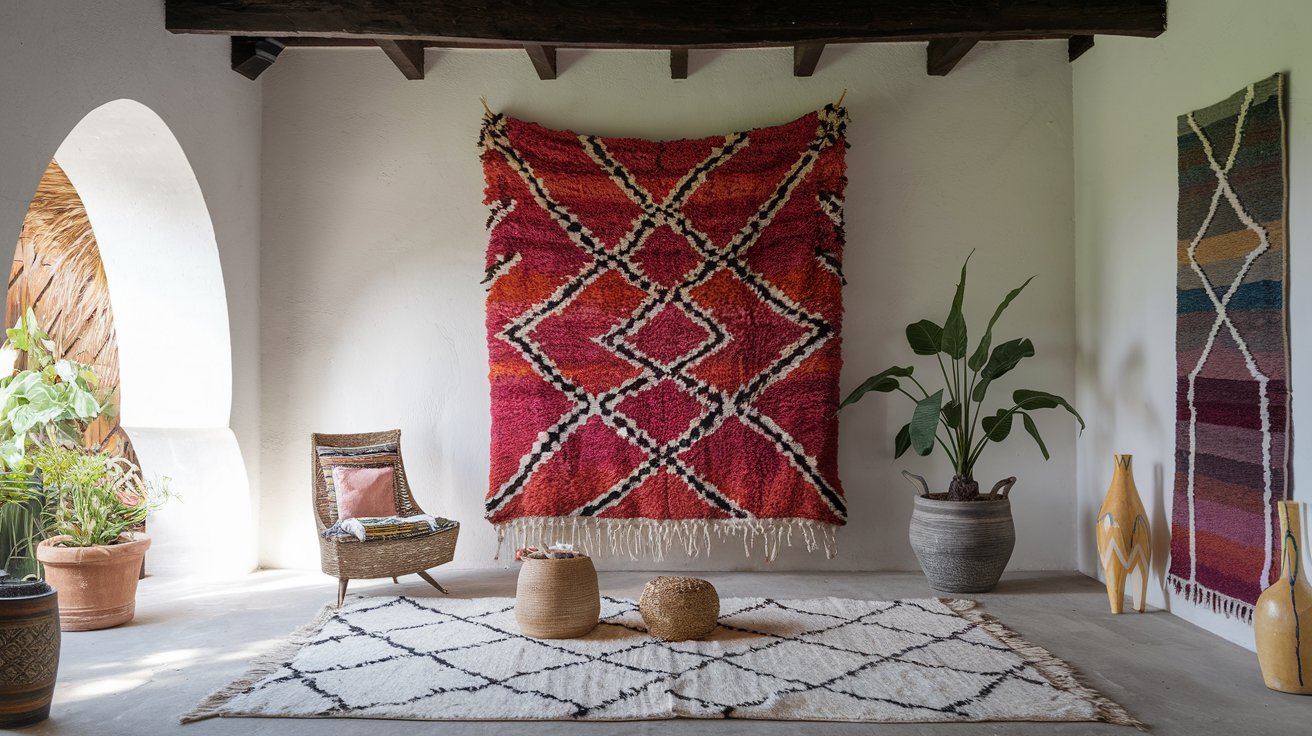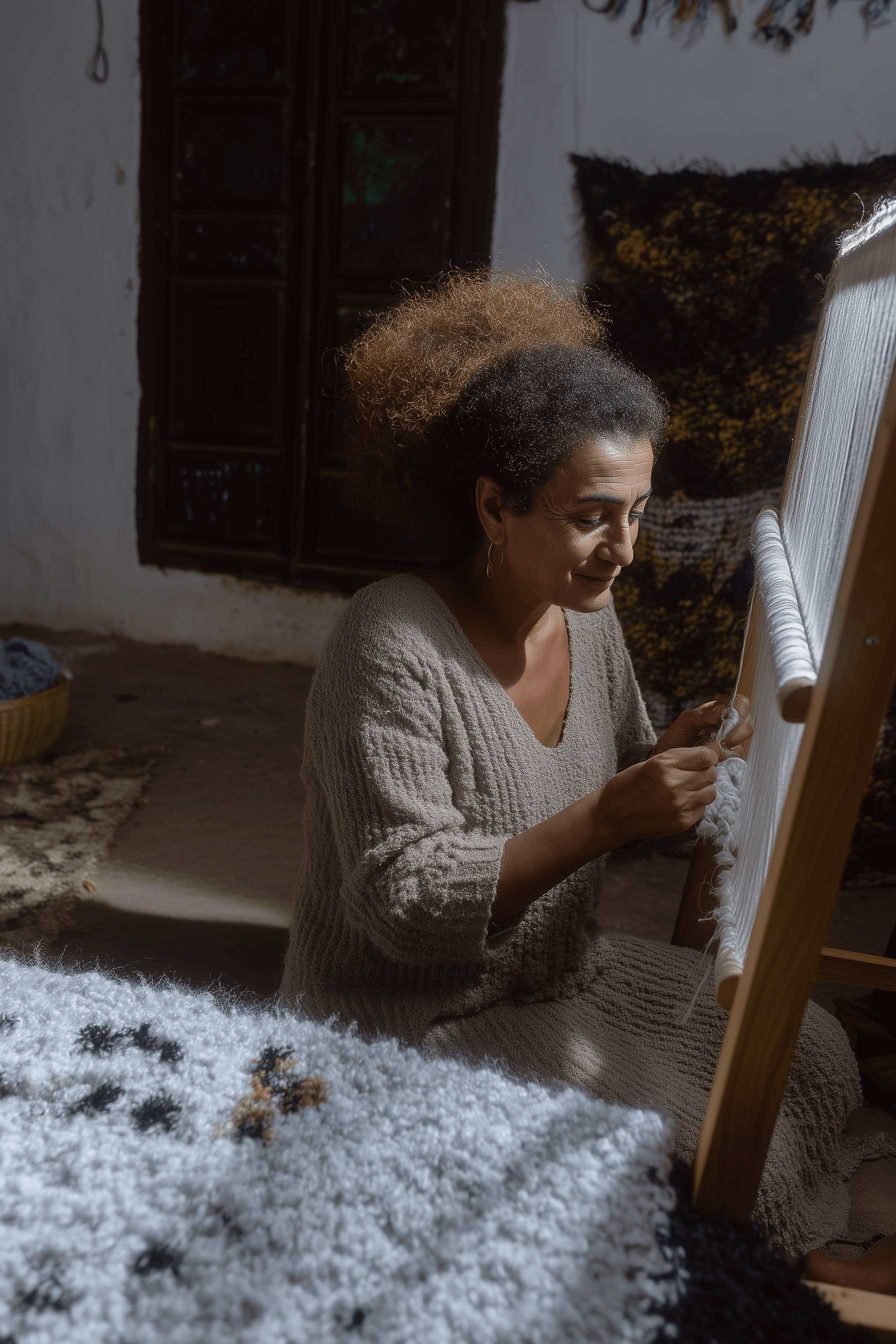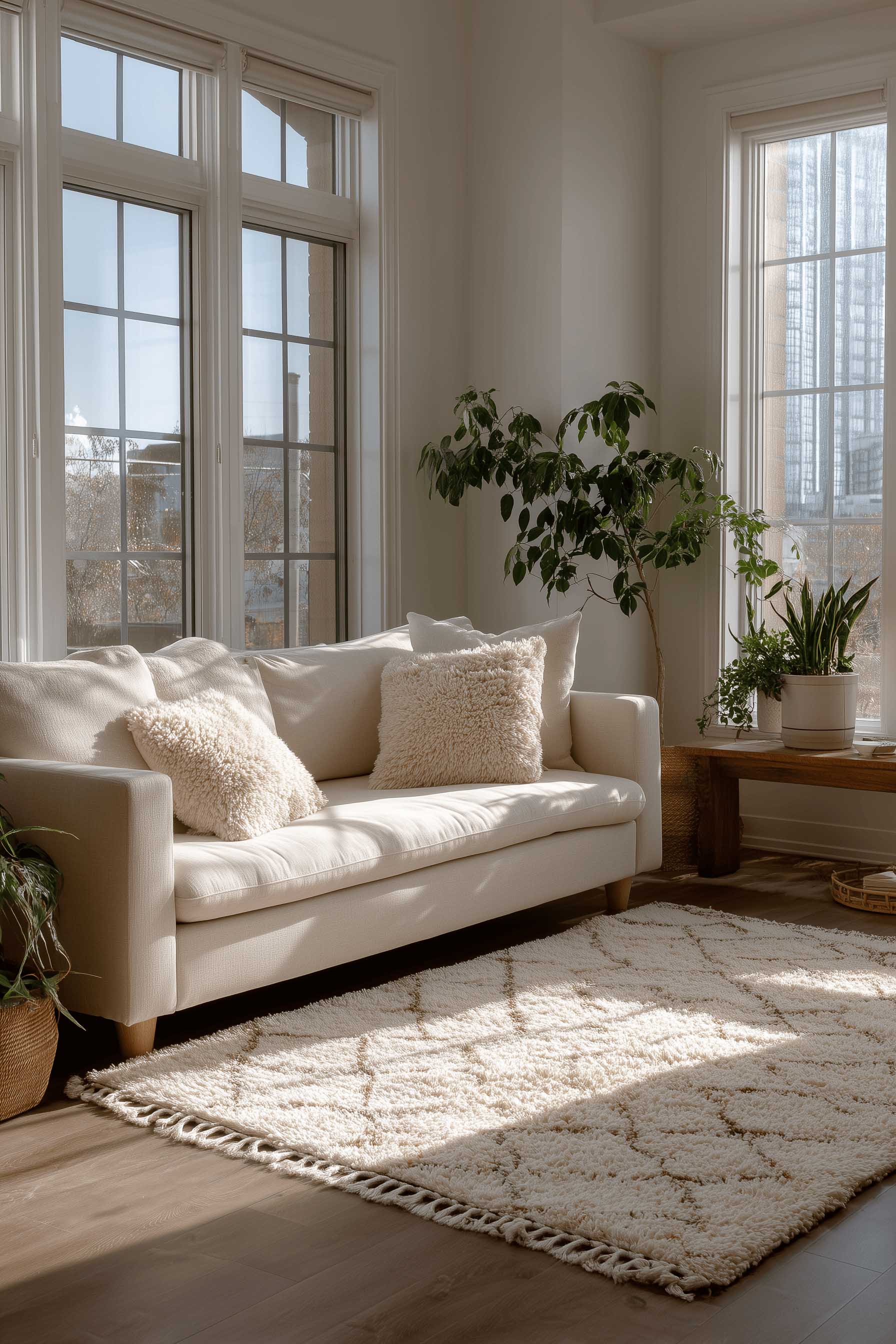
Table of Contents
- 1. A Legacy Rooted in Tradition
- 2. The Making of a Masterpiece
- 3. Symbols That Tell Stories
- 4. From Mountain Villages to Global Homes
- 5. Why Berber Carpets Belong in Your Home
- To Sum Up
1. A Legacy Rooted in Tradition

The Amazigh people also known as Berbers have woven Berber carpets since they settled in North Africa thousands of years ago.
Cultural Significance:
Berber women have maintained their traditional rug-weaving practices throughout hundreds of years as part of their regular daily routine. The Berber women made these rugs for dual purposes; they functioned as mountain cold-weather warmth and also acted as personal artistic expressions and identity markers.
Each handmade rug contains unique designs that the creator chose to express themes about fertility, protection and good fortune.
Passed-Down Techniques:
Weaving techniques get transmitted from one generation to the next without significant modifications since the traditional methods have remained consistent.
Through continuous practice the art of rug-weaving has preserved traditional techniques alongside hundreds of years of expertise.
Pro Tip: When you purchase a Berber carpet you become a part of cultural heritage preservation.
2. The Making of a Masterpiece
The production of Berber carpets needs patience alongside expertise and precise work.
Step 1: Sourcing Natural Wool

The production of every Moroccan carpet starts with sheep wool from local pastoral regions. Workers wash the wool before combing and spinning it by hand into yarn.
Natural wool provides both comfort and durability so your handmade rugs will endure across multiple generations.
Step 2: Dyeing with Natural Colors

Berber carpets receive their traditional colours from natural plant and mineral and organic material dyes. The henna plant produces red colours in the rugs and saffron produces yellow colours.
Some rugs remain uncoloured which allows the natural wool to display its ivory, brown and grey tones and showcase the natural wool's beauty.
Step 3: Handweaving Patterns

Artisans use vertical looms to weave each knot manually row by row while creating complex patterns by hand.
Any design flaws present in handmade pieces become distinctive features which demonstrate the genuine handmade nature of the product.
Fun Fact: The time required to finish a Berber carpet varies depending on its size and complexity since each rug requires weeks or months of work.
3. Symbols That Tell Stories

The weaver uses symbolism in Berber carpets to create meaningful designs which gives every rug its own individual story.
Common Motifs:
- Diamonds are symbols of protection and warding off evil.
- Zigzags frequently symbolize water because water remains a precious resource in arid Morocco.
- The designs of grids and lines in carpets typically represent either community pathways or social connections.
Personal Touches:
Every rug contains symbols that the weaver drew from their personal life experiences and beliefs which ensures that no two rugs are alike.
Pro Tip: Take time to study your rug’s patterns since you could find a message that mirrors your life experience.
4. From Mountain Villages to Global Homes

Remote mountain villages produced Berber carpets until these traditional textiles became popular furnishings in homes worldwide.
A Growing Appreciation:
Berber carpets have established a global following in recent times because of their attractive designs and genuine origins and multiple uses. Their traditional roots and contemporary appeal make designers and homeowners equally adore them.
Supporting Artisans:
The international market benefits from Berber Handicraft products that enable artisans to receive fair payment for their handmade treasures.
The purchase of products from ethical sellers supports both the continuation of this traditional craft and the empowerment of rural communities.
Pro Tip: Authenticity guarantees together with certifications serve as proof that your purchase supports actual artisans.
5. Why Berber Carpets Belong in Your Home

Versatility:
The neutral color palette of Berber carpets together with their textured patterns makes them perfect for any style including minimalist, bohemian and rustic decor. These neutral tones with textured patterns provide visual interest without creating overwhelming conditions in the space.
Comfort:
These carpets use plush wool for their construction which gives them a soft touch when you walk on them while adding warmth to every room.
Durability:
The combination of premium materials and compact weaving structure in Berber carpets allows these products to withstand heavy foot traffic without losing their attractive appearance.
Place a Berber rug in your living room or hallway or bedroom to experience its functional benefits and attractive design.
To Sum Up
Berber carpets surpass their functional purpose because they represent cultural artifacts while functioning as artistic masterpieces and enduring handcrafted creations. The handwoven masterpieces travel from the Atlas Mountains to your home while sharing stories that surpass both time and geographical boundaries.
At Berber Handicraft, we honor the artistry and traditions of Berber weaving. Selecting one of our authentic carpets allows you to enhance your home while helping artisans protect this remarkable cultural heritage.
Check out our current collection to find the perfect Moroccan-inspired addition for your living space.
Read more about our artisans "the people behind our unique creations"



